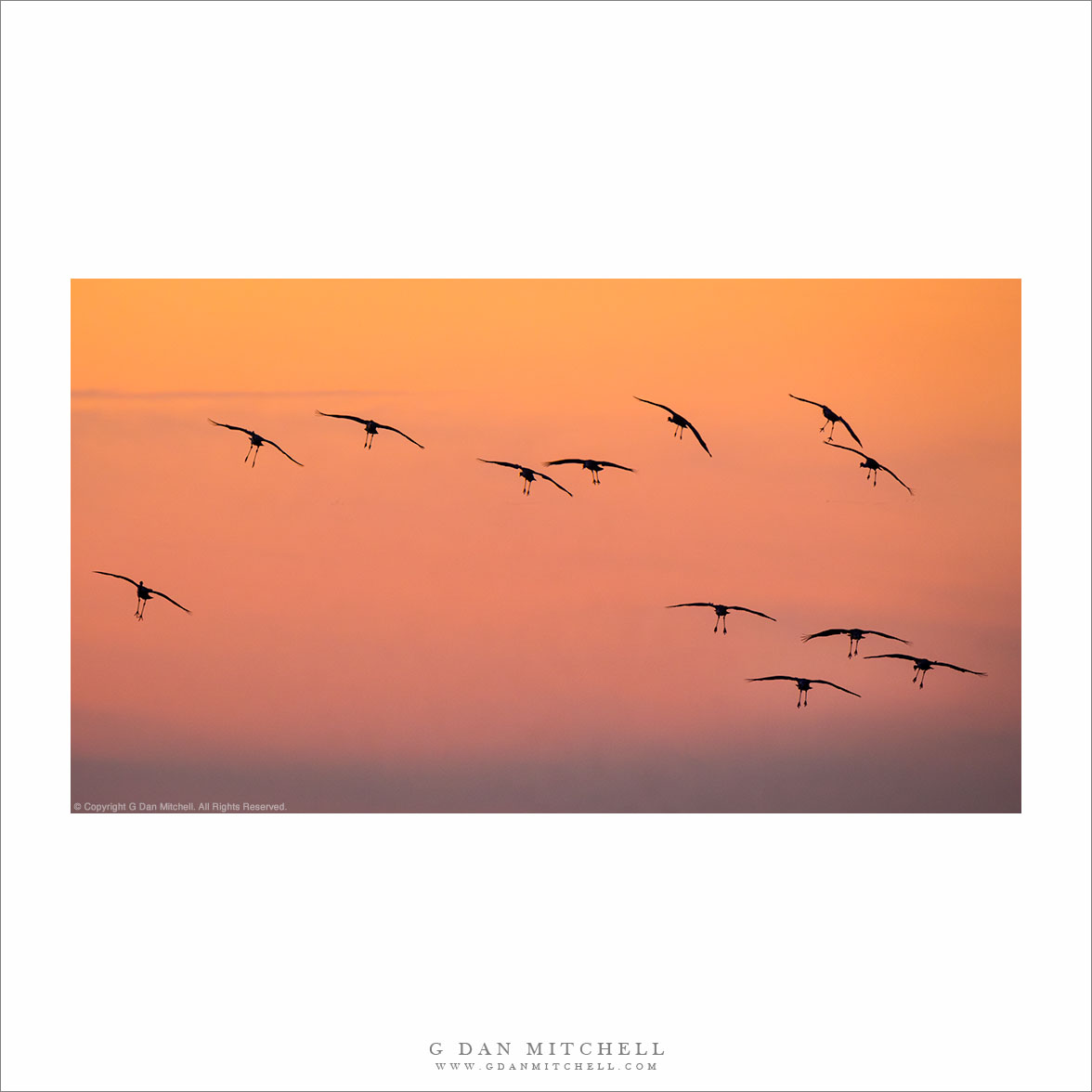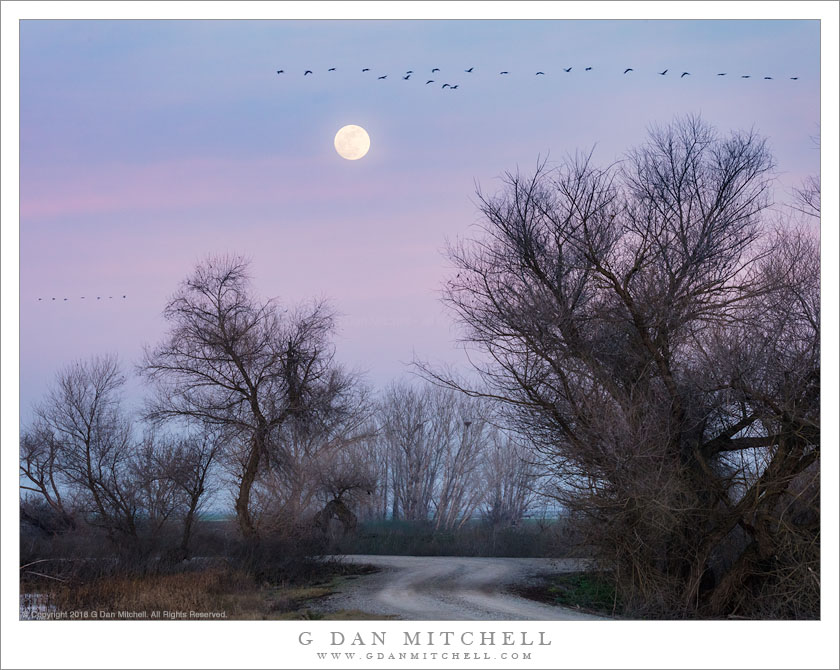
We spent New Year’s Day with friends, after getting up early to greet the literal dawn of the new year. OK, it was kind of cloudy and we didn’t see the sun until later. But still, it was a great day and a fine group to share it with. We photographed birds and landscape, and we shared food and drink that each of us had brought for the occasion. The day culminated with the evening fly-in of sandhill cranes.
The sandhill cranes stay in nearby ponds overnight, and around dawn many of them get up and fly away for the day. Typically they return at dusk, when there’s barely enough light left for photography, and their characteristic cries mark the end of the day. This small group was cooperative enough to pass through a patch of beautiful, colorful twilight sky just before landing.
G Dan Mitchell is a California photographer and visual opportunist. His book, “California’s Fall Color: A Photographer’s Guide to Autumn in the Sierra” is available from Heyday Books, Amazon, and directly from G Dan Mitchell.
Blog | About | Instagram | Flickr | Facebook | Threads | Post | Email
Links: Articles, Sales and Licensing, my Sierra Nevada Fall Color book, Contact Info.
Scroll down to share comments or questions. (Click post title first if viewing on the home page.)
All media © Copyright G Dan Mitchell and others as indicated. Any use requires advance permission from G Dan Mitchell.





